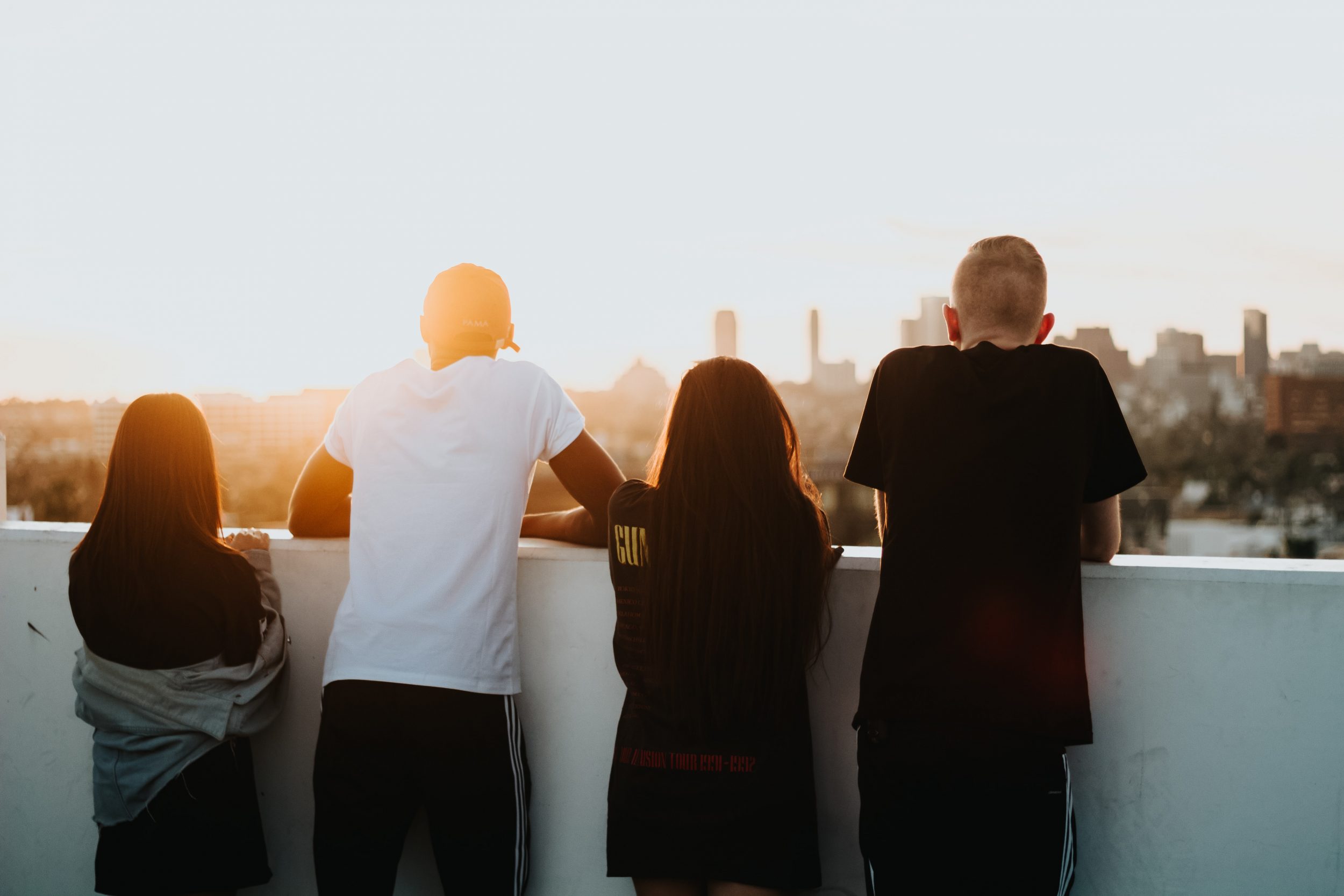For decades now, public-health researchers have collected a wealth of evidence showing that children who are at risk of engaging in harmful behaviors respond best when they are treated like children. And that criminalization, imprisonment, and surveillance harm them — and do little, if anything, to prevent more harmful behavior. The same is true for child sexual abuse, where studies have shown that carceral responses toward children who harm other children are ineffective at preventing future abuse. Armed with this knowledge and her own research, Elizabeth Letourneau, the director of the Moore Center for the Prevention of Child Sexual Abuse at the Johns Hopkins Bloomberg School of Public Health, has worked for more than 30 years to advance her vision of prevention to policymakers. And little by little, she has managed to get them to support it: In 2021, Congress appropriated $2 million for the Centers for Disease Control and Prevention to invest in child sexual abuse prevention research, a historic record. Yet her work is far from done. In this narrative essay, Dr. Letourneau explains what prevention looks like in practice and why it matters to help kids thrive. Her insights, as shared with Inquest editor Cristian Farias over Zoom on June 10, have been edited and condensed for clarity.
In this country, somewhere between 50 and 70 percent of cases of sexual abuse against kids are committed by other kids. This type of child sexual abuse is preventable, not inevitable. The same is true for every type of harm against children. Waiting until harm has happened, and waiting until somebody has caused harm to intervene, is waiting too long. It’s change that comes too late. We are waiting for kids to be harmed, which then derails them in many, many ways. Child sexual abuse victimization is associated with severe and potentially lifelong mental, behavioral, and physical health problems that can shorten the lifespan and reduce its quality.
Likewise, we are waiting for kids to cause harm, which also derails them in many, many ways. Of kids who have been adjudicated for sex offenses in the juvenile system, more than 97 percent will never go on to reoffend with another sex offense. But registration and other policies, including the incarceration of juveniles who engage in these offenses, are based on the unsupported belief that they’re all at a very high-risk of reoffending — that they will almost assuredly go on to reoffend. It’s the complete opposite: What these policies do is cause real harm to children.
For example, our team has completed research showing that children who are subjected to registration compared to children who are also adjudicated for offenses of a sexual nature but don’t have to register were four times more likely to attempt suicide — not even just to think about it, but to attempt suicide. Registered children were also five times more likely to be approached by an adult for sex and twice as likely to experience sexually assault compared to children who are not registered. That is, a policy that is meant to prevent child sexual abuse is linked to increased child sexual abuse! We suspect that some adults sexually assault registered children because we advertise to the world that these are kids who have offended sexually or committed crimes of a sexual nature — that these are bad kids who don’t deserve to be treated as human. Registration and notification are incredibly harmful policies that don’t achieve any community safety, cause harm to children, and are very expensive.
The question then becomes: If registration doesn’t work to stop sexual harm, if prison doesn’t work — which we know it doesn’t work for kids based on decades of research — then what does? There is strong empirical support for two family-focused, evidence-based interventions for adolescents who have caused sexual harm, and several for younger children with problem sexual behaviors. These programs have been shown to significantly reduce recidivism and are cost effective, meaning they save money. But treatment — while important — is still too late. We want to know what actually prevents these offenses from occurring in the first place. When I started at Johns Hopkins in 2011, it was with a mandate to develop, evaluate, and disseminate effective prevention programming. Of course, this requires resources to fund that work, which did not really exist.
We all want children to live their lives free from abuse — including victimization and perpetration. We all want children to live in safe, stable, and nurturing environments, which we know they need to thrive. And we all want to save money. Effective prevention can do all of that.
At the Moore Center for the Prevention of Child Sexual Abuse, at the Johns Hopkins Bloomberg School of Public Health, where I work and teach, we’ve drawn on studies and principles drawn from after-the-fact interventions and research to develop resources to prevent child sexual abuse perpetration from occurring in the first place. These resources are not attached to the legal system: They don’t flow from, or result in, contact with the juvenile or child welfare systems, but rather from families and educators.
One promising program is Help Wanted, a free, online self-help intervention for adolescents and young people who have a sexual attraction to children. My team designed Help Wanted after consulting with people with attraction to children as well as members of law enforcement, victims’ advocates, clinicians, and preventionists. The program has five core sessions that define child sexual abuse and explain its harmfulness, address the stigma of having an attraction to children, support developing a healthy sexuality that does not involve harming children or online exploitation of any kind, support general mental and physical health, and help people think through the pros and cons of telling others about their attraction to children.
We launched Help Wanted in May 2020 and have had more than 212,000 visits to the home page and more than 12,000 visits to one or more of the modules. Thousands of people have downloaded translations of the transcription. We are currently conducting the first randomized controlled trial to evaluate Help Wanted.
The second intervention we’ve developed and are testing is quite different. Responsible Behavior for Younger Children is a universal, school-based prevention program designed to reduce the risk that middle school-aged kids will engage younger kids in any sexual behavior or engage peers in unwanted sexual behavior. Since its universal, it applies to all kids in sixth or seventh grades, without attempting to select for risk. There is no screening — only a presumption that most of these kids do not know that younger children are off-limits for sexual exploration, and why that is so. Indeed, we chose to target kids this age because arrest records and victim surveys show that half or more of all sexual offenses against prepubescent children are caused by children who are just a few years older.
RBYC has eight sessions. Students learn about developmental differences between teens and younger children; discuss healthy and unhealthy teen-younger child relationships, including a definition of child sexual abuse and explanation of its harmfulness; talk about responsible behaviors for keeping themselves and others safe; and discuss misconceptions and facts about child sexual abuse and legal ramifications. Students also learn how to identify, avoid, and address peer sexual harassment and how to be a good bystander or upstander when they have concerns that a child or peer has been harmed.
A recently completed randomized control trial of RBYC showed promise. Relative to a wait-list control — that is, kids who had not yet received RBYC — kids who received RBYC reported more behavioral intentions to avoid harmful sexual behavior against younger children and, separately, against peers. They also reported more knowledge of the issue.
Designing, evaluating, and disseminating child sexual abuse prevention programs takes time and money. Yet there are few resources to support this crucial work. The federal government allocated just $2 million in fiscal year 2021 to support child sexual abuse prevention research. By comparison, there is almost no check we won’t write for after-the-fact efforts. For example, my colleagues and I researched how much money we put into incarceration for sex crimes. It took years, but we dug up all the officially reported costs and found that in the same year the federal government spent $2 million on prevention, the nation spent $5.4 billion solely on incarcerating people for sex crimes against children.
We certainly need to hold accountable adults who cause harm against children. But if we have $5.4 billion in the United States to spend on incarceration every year — and that figure doesn’t include anything before or after incarceration, such as detection, prosecution, legal challenges, parole, or registration — to invest in warehousing people who have already caused harm against children, then we should be investing much more to try to prevent them from harming kids in the first place.
We know that about 12% of children are going to be impacted by child sexual abuse, and we know that the impact can be severe and long-lasting. We know that victimization reduces the quality of life, and even the duration of life for some survivors. Many survivors receive support and find resilience; they are not doomed to a life of suffering. But child sexual abuse is still associated with almost every type of harmful outcome you can think of. Mental health problems. Behavioral health problems. Physical health problems. It’s related to [chronic obstructive pulmonary disease] COPD. It’s related to early onset of smoking, substance use, and increased sexual risk-taking. We know that it reduces survivors’ earnings. And all of those things have long-term consequences. The effects can be for life.
One thing that I kept hearing from policymakers on either side of the aisle was that prevention clearly makes sense. You don’t really have to sell it; it sells itself in the sense that people understand it. It’s better for a kid to avoid being victimized than to wait until a child has been sexually abused and bring in resources to help them recover from the trauma. It’s better for a kid to avoid offending than to wait until a child has caused harm and bring in the juvenile justice system. But over the years, what many policymakers would also say is that there are budget caps, that there are deficits. In other words, that we just don’t have the money for prevention.
The place we get the biggest bang for our buck is to prevent harm before it occurs. That’s what we do for child physical abuse, for child neglect, for bullying, for adolescent suicide, and for peer-on-peer violence. We uniquely do not support prevention for child sexual abuse. Part of it may be that we have blinders: Our society thinks of people who commit sex crimes as monsters, as qualitatively different from the rest of us, as though they are impervious to prevention and treatment efforts. People truly believe the best we can do is wait for them to cause harm, and then catch them, lock them up for as long as possible, and then surveil them — if we ever let them out — for the rest of their lives. It’s a narrow, incorrect, and harmful focus. It means we keep waiting for kids to get abused — and to cause abuse — before we act. We could do so much better than that. Child sexual abuse is preventable, not inevitable.
Image: Devin Avery/Unsplash

